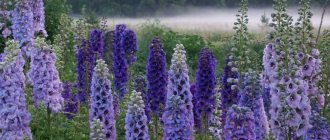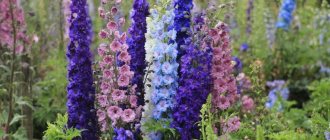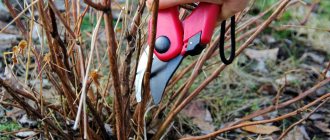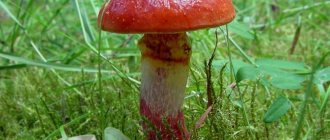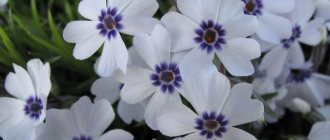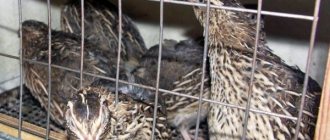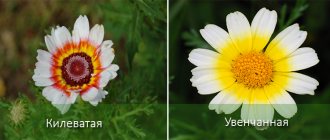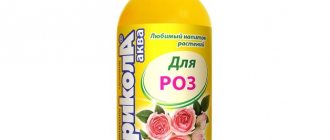Origin and description
The historical homeland of the plant is in Greece; the name itself comes from the city of Delphi, near which a huge number of these flowers grew. The name of the culture was given by Dioscorides, who was an ancient Greek physician and naturalist.
Delphinium, appearance
The plant has a straight, hollow stem that is easy to break, so tall species will need to be staked. Dwarf plants have a height of 0.1 to 0.4 meters, tall ones - up to 2 meters, forest specimens are real giants (3 meters).
Delphinium leaf blades are dissected and have jagged edges. They can be wedge-shaped or multifaceted. The color of the leaves varies depending on the color of the flower. If it is dark, then the leaves are brown or reddish; if it is light, then they are green. The arrangement of leaves is alternate; their number is influenced by the quality of the soil and the species of larkspur.
Flowers can be:
- simple;
- semi-double;
- terry.
The form itself is adapted for pollination by bumblebees and hummingbirds, and to a lesser extent it is convenient for butterflies. Flowers can be blue or purple in color; cultivated forms have a richer palette. Inflorescences are found both paniculate and pyramidal.
simple flower
The flowers have sizes of 2-8 cm, this is determined by the species. One inflorescence contains from 50 to 80 flowers located on half of the stem part.
6. Diseases and pests
Powdery mildew, botrytis and leaf spot occur when cool, wet weather persists for a long period of time. Insufficient air movement also contributes to the development of fungal diseases. Bacterial, gray and white rot.
Rust. Black spot.
The root system can rot if there is excess moisture and insufficient drainage.
Leaves turn yellow and plant development slows down if they are deficient in nutrients.
Delphiniums also suffer from various viral diseases - when the first signs appear, the flower is immediately dug up and destroyed. It is prohibited to send such specimens for compost. The soil in which the plant was located is watered abundantly with a saturated solution of potassium permanganate.
Harmful insects may include cyclamen mites, nematodes, delphinium flies, and aphids. When grown in open ground, the flower is sometimes attacked by slugs and snails.
↑ Up,
Types and varieties of delphinium
Perennial lupine - when to plant seedlings
Representatives of the spur genus can be divided into 3 groups:
- The tallest - the tall delphinium grows up to 3 meters. The leaf blades have a rich green color, the stem is covered with villi. Inflorescences are racemose, dense;
- Large-flowered - represented by an annual plant up to 0.8 m in height. The stem has vertical branching. Delphinium begins to bloom in mid-summer;
- Field - also classified as annuals, height - up to 2 meters. Flowering period – July-September. The inflorescences are pyramidal, there are both double and simple flowers.
It is worth talking in more detail about some interesting varieties of larkspur.
Delphinium white
Fans of perennial plants should take a closer look at the Galahard variety. Distinctive features include tall growth (about 2 meters) and the presence of snow-white double flowers with a diameter of up to 7 cm. The inflorescence is cone-shaped.
White variety
The plant is used in the design of borders and walls. White delphinium stands very well when cut.
Delphinium yellow
This shade is characteristic of the semi-bearded delphinium, which grows in Iran and Afghanistan; it is not a hybrid. The height of the plant reaches 120 cm. Those who want to grow a beautiful flower are recommended to purchase “Solar Knight” seed material. Here it is worth considering the peculiarity that the yellow delphinium has - it is extremely thermophilic.
Delphinium blue
You can meet such a representative in the Caucasus region. This perennial is also called beautiful delphinium. The height of the plant is up to 0.8 m, the inflorescences are up to 0.45 m long, and the shape is racemose. Flowers can be blue or purple.
Blue variety
Delphinium blue is represented by at least two more varieties and varieties: large-flowered or Chinese, “Tsarsky”, “Magic Fountain”, “Pacific”.
Delphinium blue
The variety, called "Summer Sky", will delight those plant lovers who want to grow light blue flowers. The height of the spur reaches 2 meters. The perennial crop prefers areas with good light and some shade during hot hours.
Delphinium blue begins to bloom in June and ends in July. Plants can be planted either singly or in groups. Another feature is the long standing time in the cut. This includes the New Zealand delphinium.
Delphinium terry
This variety includes several varieties, but “Black Knight” will look most effective. The height of the crop reaches 2 meters, the inflorescences are long, cone-shaped, the color of the flowers is purple, closer to lilac. In a flower garden, such a plant looks great with other representatives of perennial families.
Black Knight
Terry delphinium is represented by the following varieties:
- "Black Knight";
- "Guardian";
- "Purple Flame"
Delphinium pink
You can find the pink variety by purchasing the following varieties:
- "Princess Caroline";
- "Red Giant";
- "Dusky Maiden"
- "Deep Sweethearts"
- "The Pledge of Youth."
Princess Caroline
Delphinium pink “The Pledge of Youth” is represented by plants reaching a height of 0.7 meters; the flowers are pinkish in color. All other varieties are also pink in varying intensities.
Plant varieties
There are three main types of delphinium:
- Tall delphinium. This species can reach three meters in height. It has fleecy branches and fairly rich green foliage. The flowering of this species is racemose and dense, has an intense blue color.
- Large-flowered delphinium. An annual that can reach a height of 80 centimeters. It has a downy stem with vertical branching. The leaves of this species are triple. And flowering occurs in large inflorescences, consisting of flowers and having a racemose shape. The flowering period begins in July. The flowers have a blue or blue tint.
- Delphinium field. It is characterized as an annual plant that can grow up to two meters in height. The flowering period begins in the middle of the summer season and ends in September. The flowers are pyramid-shaped, have a standard or double structure and shades such as snow-white, pink, lilac and blue.
This plant began to be bred for the first time in the 19th century, trying to cross the large-flowered delphinium and the tall delphinium. This led to the production of the first hybrid, Barlow, as well as the species Belladonna and Formosum. After this, other hybrid varieties with different colors began to actively form. Nowadays, there are approximately 800 different shades of these colors, with different diameters and shapes of the border.
Hybrids
There are a huge number of varieties and subspecies of this flower, quite diverse, so that absolutely anyone can find exactly the one that they personally need. One of the first hybrids developed by Ajax has quite wide application, and a large number of new hybrid varieties have been developed on its basis. Here are the most common and beloved hybrid subspecies of this flower in our country: Astolat, Ajax, Black Knight, Galahat, Red Giant, Magic Fountain, Princess Caroline, King Arthur, Crystal Delight, Highlander Blueberry Pie.
The creation of hybrid varieties was based on three main species. Now these varieties are divided into several separate groups. Let's look at them:
A fairly young group that appeared several decades ago. Varieties of this group are distinguished by their unpretentiousness to climatic growing conditions, survive frosts well, and have a long flowering period. That is why they have earned quite wide popularity and distribution among our gardeners. The varieties of this group simply look great in gardens and have a number of distinctive features:
- They are quite tall in size and can grow up to two meters.
- The flowers have a double or semi-double structure.
- It has long peduncles that can reach a length of 80 centimeters.
- The inflorescences are racemose, quite large, and consist of 4-6 rows of petals.
- The flowers have a diameter of approximately 9 centimeters.
- They have a variety of colors, for example, snow-white, blue, lilac.
Transplantation after purchase into open ground
Delphinium - care and growing from seeds
Next about delphinium, long-term planting and care. It's time to understand the intricacies of growing a beautiful plant.
What you need for planting:
- spur bushes (it is best to take plants 3-4 years old);
- landing place;
- supports for garter, if preference is given to tall varieties.
Optimal place
With the right choice of place for planting, the spur will always delight its owner with beautiful flowering. The basic rules are:
Landing area
- Availability of good lighting. The ideal site is one where there is sunlight in the morning and evening hours, and shading in the afternoon. The crop tolerates heat well, but if the variety is brightly colored, it will fade in the sun, which will lead to loss of attractiveness and decorativeness.
- Protection from drafts. Among delphiniums there are a large number of tall varieties; gusts of wind will easily break the hollow stems.
- There should be no stagnation of liquid. If moisture is not absorbed into the soil for a long time, the root system will rot.
- Particular attention should be paid to the soil.
On a note. Larkspur prefers moderately moist loam, sandstone with a neutral or slightly acidic environment. The plant responds well to large amounts of organic matter.
How to prepare the soil
When growing delphinium, if for some reason the soil on the site does not meet the ideal, it can be improved. For clay soils use:
- sand – 1-2 buckets per 1 m²;
- mineral fertilizers – 50-80 grams per 1 m²;
- humus or compost – 20-25 kg per 1 m².
Before planting larkspur, depleted soil is enriched per 1 m²:
- mineral supplements – 40-50 grams;
- organic fertilizer – 10-15 kg.
Lime is added to acidic soils, and sulfur in granules is added to alkaline soils (30-50 grams per 1 m²).
Step by step planting process
Delphinium planting occurs according to the following principle:
- The earth is dug up using a spade bayonet.
- A drainage layer of 20 cm is laid out.
Cuttings
- The dug up soil is mixed with fertilizers: compost - 1 bucket, ash - 2 cups, bone meal - 1 cup, superphosphate - 2 tablespoons. The quantity is calculated per 1 m².
- The spur seedling is lowered into the ground so that the root collar is buried no more than 2-3 cm.
Options for use in landscape design
This plant is quite tall - up to 20 cm. It will be an excellent option for decorating small buildings and fences. Delphinium can be planted in mixborders, flower beds and flower beds. Even a few plants can make a garden significantly brighter.
In mixborders, this plant should be placed in the background. In group plantings, bushes of different shades are successfully combined. So, with yellow delphiniums you can plant loosestrife, yellow lilies, and lupine. With white ones - pink peonies.
Delphinium propagation
There are several options for breeding the domestic spur.
Cuttings
Delphinium annual - field, wild, large-flowered
Plants are cut in spring, after young shoots have grown. As soon as they reach a height of 10 cm, they can be cut off at the very root with a small particle of it. The cuttings are planted in a suitable container with soil, deepening the root by 2 cm. The ideal temperature in the room is +20-25°C.
Helpful advice. Larkspur cuttings root best in light soil consisting of peat and sand in equal proportions.
It is not recommended to place the cutting in a very sunny place; it is best to choose light shade. To create greenhouse-like conditions, a glass or polyethylene shelter is used. After 14-21 days, the growth of the roots of the system begins. The process takes 28-35 days.
Growing from seeds
This method involves 2 options: the seeds are sown directly into the ground, or seedlings are first obtained from them, then the seedlings are transplanted to the site.
How to get seedlings
You can achieve flowering in the first year of a perennial’s life by following the following scheme:
- Sowing is carried out in February (if there are phytolamps for additional illumination) or you need to wait until the daylight hours increase.
- The seeds are treated before planting.
- The choice of container for sowing is also important. It is recommended to use seedling containers that are shallow and have drainage holes.
- Soil preparation. You can use a universal mixture for seedlings or succulents. For those who want to make it with their own hands: 2 parts peat, 4 parts vegetable or garden soil, 2 parts humus or compost, 1 part sand. The soil needs to be sifted, add perlite at the rate of 1 cup per 10 liters of soil.
- The soil is disinfected (heated in the oven for 60 minutes). If the mixture is purchased, then it needs to be spilled with Fitosporin.
- Fill the containers with soil, sow the material on the surface, do not deepen or press down.
- Vermiculite or a little soil mixture is used for dusting.
- Cover the containers with lids or polyethylene and place the crops in a cool, dark place. There they will begin to grow.
Important point. Using peat pots for delphinium seeds is not suitable. The roots of seedlings colonize the soil slowly, which leads to acidification of the soil.
The seeds begin to sprout in the middle of the 2nd week. It is recommended to carry out daily checks of seedlings from 7 days (after planting). As soon as the crops appear, they will need to be moved to a warmer room. Covers are also removed.
Delphinium flowers are obtained from seedlings under the following conditions:
- wet soil;
- daylight hours 12-14 hours;
- temperature +18-20°C.
Seedling
Picking is carried out when 2 true leaves appear. The sprouts need to be placed in individual small cups, the soil will be the same as that used for germination, you also need to add complex mineral fertilizer at the rate of 2 tablespoons per 10 liters of soil.
On a note. Before planting plants in a permanent place, it is recommended to fertilize them with a suitable complex mineral fertilizer. If the solution gets on the delphinium leaves, it must be washed off.
Planting in a garden bed
You need to plant the delphinium flower in the second half of April, you need to start by preparing the bed:
- dig up the soil 30 cm;
- apply complex fertilizing;
- make grooves to a depth of 1.5 cm;
- water thoroughly;
- spread the seed material along the grooves;
- cover with dry soil.
To obtain faster and more friendly shoots, the bed is closed to create a greenhouse effect using agrofibre or dark film. The beds need to be moistened periodically to prevent them from drying out. The material can be removed after shoots appear in 21-28 days.
Dividing the bush
You need to choose shrubs that have reached 3-4 years of age. Spring is the best time for propagation, when the leaves begin to grow.
Dividing the bush
It is necessary to remove the root from the soil and divide it so that each division has one shoot, one dormant bud and many roots. The landing is carried out in a prepared place.
Growing delphinium from seeds
Sowing
Growing delphinium from seeds is much cheaper and easier than purchasing ready-made planting material. In addition to seeds, this plant can be propagated by buds, dividing the bush and cuttings.
Sowing of seeds should be done in the last days of February. It should be taken into account that if the seeds were stored in a warm place and at low humidity, then their germination rate may be quite low. For storage, it is recommended to place fresh seeds on the shelf of the refrigerator, or you can sow them immediately after collection.
Before sowing, it is necessary to disinfect the seeds. They are poured into a bag made of gauze and placed for a third of an hour in a solution of potassium manganese, the color of which should be dark pink. A fungicidal agent is also suitable for this purpose, and the solution is prepared according to the instructions attached to it. Without removing the seeds from the bag, you need to rinse them thoroughly in running cold water, and then immerse them in an epin solution for 24 hours (2 drops of the product per half a glass of water). Then the seeds need to be dried.
To prepare a suitable soil mixture, you need to combine garden soil, peat, compost (humus) and washed sand in a ratio of 2:2:2:1. Sift thoroughly. In order for the substrate to be more loose and moisture-absorbing, it is recommended to add a little perlite to it, namely, for 5 liters of soil, take ½ part of a glass of the substance. Then the earth mixture is heated in a water bath for 60 minutes for sterilization. Pour the prepared soil into a container intended for sowing and lightly compact it.
Sow the seeds, distributing them over the surface of the soil. In order not to confuse the varieties, attach a label to the container with the name and date of sowing. Place a three-millimeter layer of substrate on top of the seeds and tamp it lightly. Water very carefully (you can use a sprayer) using cold boiled water. Cover the top of the container with a lid, which must be transparent, and place a black film (covering material) on top of it. The fact is that in the dark, seedlings will appear much faster. Place the container on the windowsill next to the glass. Seeds germinate best at a temperature of 10–15 degrees. In order to significantly increase the germination of seeds, it is recommended to place the container on a glazed balcony or on a refrigerator shelf 3-4 days after sowing (frosts down to minus 5 degrees do not pose a danger to them). After half a month, the container is again transferred to the window. Wait 7–14 days and you will see the first shoots, after which you must remove the cover from the container. It is necessary to water systematically, preventing the soil from completely drying out, and also ventilate the crops, while removing condensation.
Delphinium from seeds. We sow Delphinium in a jar.
Seedling
If the sprouts are healthy, they are dark green, powerful, and the cotyledons have a characteristic point. After the formation of 2–3 true leaf plates, picking is carried out into containers, the volume of which should be equal to 200–300 milligrams. After this, they should be grown at a temperature of no more than 20 degrees. The soil needs to be loose and well permeable to air. Watering must be done carefully and extremely moderately; the fact is that waterlogging can contribute to the appearance of a disease such as blackleg. From the first days of May, it is necessary to begin to accustom the seedlings to the street air; for this, when the window is opened for ventilation, the container with the plants is not removed from the windowsill. Delphiniums should also be accustomed to sunlight. To do this, they need to be placed in a sunlit place for a while. Seedlings should be fed 1 or 2 times with an interval of half a month, for this you use “Mortar” or “Agricola”, while making sure that the fertilizer does not get on the surface of the leaves. When the seedlings grow up, they should be transplanted into open soil. At the same time, when the lump of earth is completely entwined with roots, it will be very easy to remove it from the container.
Planting in open ground
After the frosts stop, you can start planting delphiniums in the garden. At the same time, do not forget that the area suitable for planting must be illuminated by the sun in the first half of the day, and there should be no stagnation of water in the soil. Between the bushes you should maintain a distance of 60 to 70 centimeters, and you need to prepare a hole that is half a meter deep and has a diameter of about 40 centimeters. In each hole you need to pour ½ part of a bucket of compost (humus), a couple of large spoons of complex fertilizer, as well as a full glass of wood ash. Then everything needs to be mixed with the soil so that the fertilizers do not end up on the root system of the plant, as they can leave a burn. After this, you need to transplant the delphinium seedling into a hole prepared in advance, sprinkle it with soil and compact it. Water the plant. For the first time, it is recommended to cover the plant with a cut plastic bottle or glass jar for better rooting. After it begins to actively grow, the shelter must be removed.
Care
Delphinium care and cultivation do not involve complex procedures, the main thing is to do everything regularly.
Watering mode
During the growing season, one spur grass consumes 65 liters of liquid. If the summer does not indulge in precipitation, then once a week each bush is watered with 2-3 buckets of water. The crop is watered more often, but less abundantly, when inflorescences form. Lack of moisture leads to the fact that some buds do not fully develop, and inflorescences are formed with voids.
Need to know! Watering is carried out only at the root, because Water should not get on the green parts of the delphinium.
With the onset of late autumn, when there is insufficient precipitation, abundant watering is also carried out so that the larkspur can prepare for the upcoming winter. After watering and drying the soil, you need to loosen it.
Top dressing
Flowers are fed 2 times a season:
- at the beginning of spring, add urea, potassium sulfate (2 tablespoons of each component) and 1 tablespoon of superphosphate per 1 m²;
- before flowering begins, phosphorus and potassium fertilizers, 1 tablespoon per 1 m².
Important! In August, fertilization should be stopped to prevent growth and continued flowering. Plants should set flower buds for the next season.
During the flowering period
To get larger and denser inflorescences, you need to thin out the delphinium. It is necessary to get rid of weak shoots so that in the end there are 3-5 stems left. This applies to both tall and short growing varieties.
Fragile stems and heavy inflorescences break easily, so you need to take care of the garter. It is recommended to fix the bush at different heights.
During the rest period
After flowering is completed, the shoots begin to die off, and their appearance leaves much to be desired. If you do not plan to collect seed material, then the stems need to be cut and the cut areas must be processed. After some time, some varieties of delphinium can grow shoots and bloom a second time.
Trimming result
There is no need to prune shoots in autumn. If water gets into the hollow stems, it may result in rotting of the root system.
Preparing for winter
After flowering has completed and the leaves have dried, it is necessary to trim the stems at a height of 30 cm from the ground. All cavities are covered; for this you need to use clay or garden pitch.
If the variety is frost-resistant, then special shelters are not provided. Protection will only be required for young plants. The base of the bushes is covered with straw or spruce branches, and grooves are made next to the plants so that excess water does not harm the root system.
Although caring for and growing a delphinium requires some effort, it is worth it. The spur will become a real decoration of the garden, which you won’t be ashamed to show to guests.
Factors for successfully growing and flowering delphinium in the garden
In order for this beautiful flower to delight its owner and surprise others with abundant and regular flowering, favorable conditions for life should be created for the flower:
- The place for planting the plant should be sunny, however, direct sunlight throughout the day can destroy the plant. Therefore, care should be taken to ensure that the selected area is slightly shaded, especially at midday. For example, a plant feels comfortable under a tree or next to a tall bush, near a fence or near the wall of a house;
- It is advisable to loosen and fertilize the soil where the delphinium grows more often. Heavy clay soil must be diluted with sand and humus;
- delphinium tolerates drought quite easily and does not like excess moisture in the ground, however, when planting inflorescences, the plant should be watered abundantly;
The only weak point of delphinium is its fragility. In order not to lose the beautiful blooming pyramid of flowers, the plant must be tied up. Strong wind, rain, heavy inflorescences can destroy the bush.
A particularly vulnerable spot is the junction of the stem and rhizome. Therefore, if the gardener does not want to see a broken two-meter stem of the delphinium, it is best to tie up the bush in advance. The first garter should be made at a level of half a meter from the ground, the next - at a level of 1-1.2 m.

